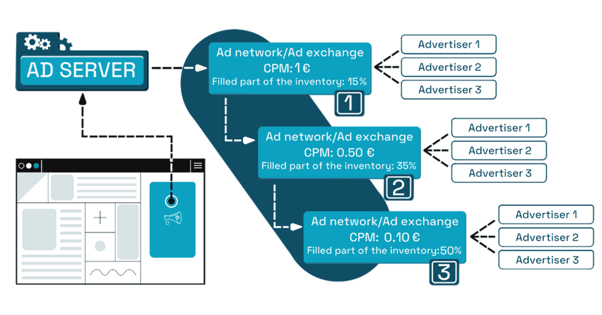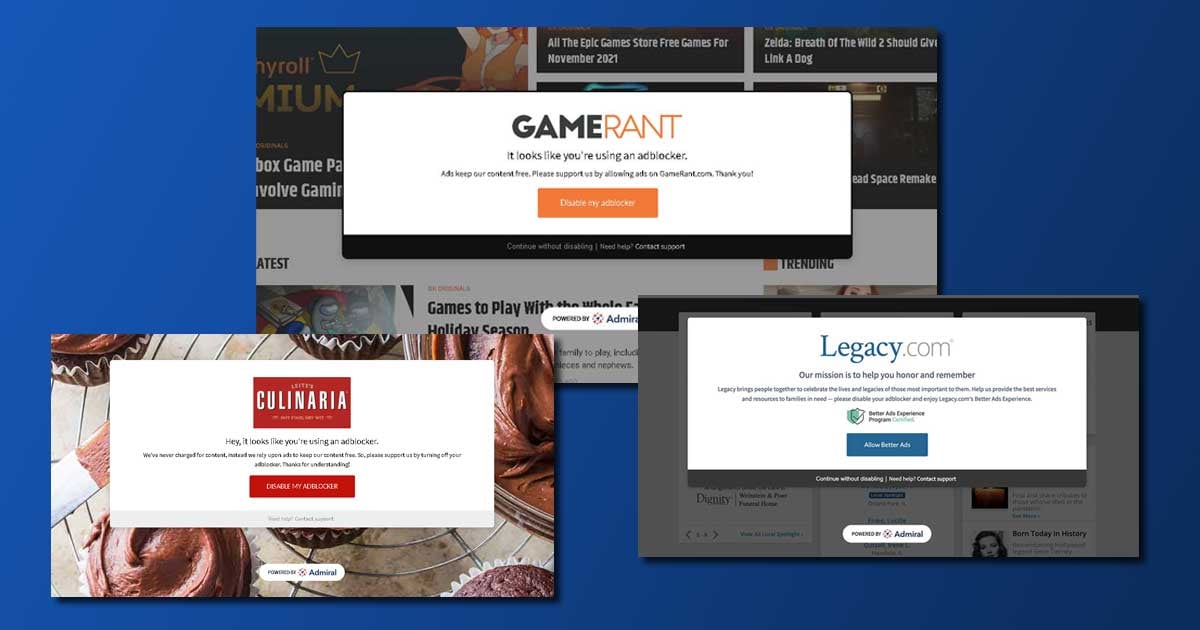Digital publishers have several options for monetizing their websites. Typically, this method is associated with selling ad inventory to advertisers. Although Google AdSense is the most popular platform for small publishers, there is a higher ad revenue-yielding method called header bidding.
Like most programmatic advertising, it is a completely automated process. Still, its unique setup leads to more competition among advertisers, leading to a higher cost per mille (CPM) for the publisher. That’s more money in your pocket, which you can redirect to your business’s needs.
Read this Header Bidding Guide to learn all the ins and outs of header bidding, including tips for using it successfully.
Jump to:
- What is Header Bidding and How Does it Work?
- Benefits of Header Bidding for Publishers
- Implementing Header Bidding for your Website
- Common Challenges and Solutions for Header Bidding
- Tips for Successfully Using Header Bidding
- The Future of Header Bidding
- Is Header Bidding Right for your Website?
What is Header Bidding and How Does it Work?
Definition of Header Bidding
Header bidding is an auction-based programmatic ad placement technology that digital publishers use to sell ad spaces (also known as ad inventory) to the highest bidding advertiser.
Header bidding vs waterfall
Before header bidding, the programmatic waterfall was the most popular way to auction off ad inventory. The difference was that advertisers placed bids sequentially rather than simultaneously.
If the first advertiser didn’t exceed the floor price (the minimum CPM the publisher would sell their ad units), then the next advertiser in line would get a chance. Whichever advertiser in the sequence met or exceeded the floor price would win the ad space.

This bidding method was disadvantageous to both digital publishers and advertisers. Advertisers who were further down the sequence of bidders would often not get the chance to bid at all.
Meanwhile, publishers could only make as much as the floor price from one of the first advertisers, whereas an advertiser down the line might have made a bigger offer. This meant that the waterfall method was not optimal for selling ad space, especially premium one, as the publisher was often forced to undersell.
Header bidding vs real-time bidding (RTB)
Real-time bidding (RTB) is when advertisers make bids in real-time on ad inventory. Real-time bidding is powered by OpenRTB, a communication protocol that enables real-time bidding and streamlines the ad buying and selling process. Header bidding is just one of the ways the ad inventory can be sold through RTB.
How Does Header Bidding Work?
Header bidding happens in the time the user clicks on a link to a website and the webpage loads. The entire process takes milliseconds, which is made possible by programmatic advertising.
Overview of Programmatic Advertising
Programmatic advertising is an automated system of buying and selling ad inventory using JavaScript (JS). That’s why ad bid requests can be processed so quickly–they’re being run by a computer program, not a human being.
The Header Bidding Process
The Role of the Ad Server
An ad server, like Google Ad Manager, previously known as DoubleClick for Publishers, allows digital publishers and advertisers to place and distribute advertisements. Header bidding collects bids on the publisher’s webpage before making an ad request to the ad server.
The Auction Process
As the webpage is loading, a script in the website’s header sends a bid request for ad inventory to multiple ad-buying platforms, called demand partners. Popular demand partners include supply-side platforms (SSPs) and ad exchanges.
Once the bid request reaches the demand partners, advertisers will place their CPM bids. The highest bidder will win the ad space, at which point the publisher's page calls the ad server. The ad server will display the ads belonging to the bidder, and those are the ones that the user will see when the webpage finishes loading.
Interested in more ways to monetize your website?
Admiral's Visitor Relationship Management tag delivers:
- paid subscriptions and donations -- adblock revenue recovery -
- email and social media signups -
- GDPR privacy consent -
Let's talk. Request a demo today:

What are the Benefits of Header Bidding for Publishers?
Increased Competition Leads to Higher CPMs
By using header bidding, publishers can send their bid requests to more demand partners. In doing so, they create a greater pool of bidders, which increases competition and leads to higher CPMs.
Greater Control Over Inventory and Pricing
With header bidding, publishers have greater control over how much of their inventory they want to sell and at what prices.
Increased Fill Rate
Header bidding can help you increase your ad fill rate, which is the rate that shows how many of your ad units were “filled” after you sent bid requests to your ad server. This is because your bid requests are being shown to more advertisers, thus increasing the likelihood that you’ll get a buyer.
Implementing Header Bidding for Your Website
What are the Steps for Setting Up Header Bidding?
Choosing a Header Bidding Wrapper
To set up header bidding for your website, you must first choose a header bidding wrapper. This is the JavaScript code embedded into your website that will automatically send bid requests to different demand partners.
Wrappers are typically built on top of prebid.js–the most popular open-source header bidding wrapper on the web. The choice of header bidding partner will ultimately depend on your criteria, such as the number of demand partners that can participate in your auction at the same time or the availability of server-side connections.
For example, Setupad’s header bidding solution connects your ad inventory with 30+ demand partners while simultaneously running both client-side and server-side header bidding for maximum yield and faster page loading speed.
Integrating Advertisers and Demand Partners
Next, you must integrate the advertisers and demand partners you want to allow to bid in your auction. Because programmatic bidding consists of many moving parts, you can't just invite advertisers to bid on your inventory. Advertisers need to optimize their budgets, therefore, they participate in bidding through demand-side platforms (DSPs). The same software exists on the publisher's side–supply-side platforms (SSPs).
Testing and Optimizing Your Header Bidding Implementation
Finally, once the header bidding code is integrated into the website, it's time to test and optimize your header bidding implementation. Typically, publishers may choose to partner with a monetization platform, if they don't have a dedicated AdOps or engineering team. The reason why this is more cost-efficient is that a monetization partner will be able to advise on the best ad placements and formats, and continuously optimize your header bidding setup.
Common Challenges and Solutions for Header Bidding
Managing Page Latency and Timeout Issues
Header bidding will naturally cause some page latency due to running multiple exchanges instead of 1 and every demand partner adds weight to JS code. This, however, can be mitigated with careful timeout management. Extra revenue generated thanks to header bidding generally outweighs any possible performance decrease. However, if you're still worried about page loading times, server-to-server connections can be a solution for you.
Server-side header bidding allows the web browser to send a single request to many demand partners, from where the server handles the heaviest part of the header bidding logic. That’s why server-side header bidding is an ideal choice for publishers, as servers are designed to process a large volume of data transfer, thus making them work way faster than web browsers.
Dealing with Ad Blockers
Approximately 30% of visitors use ad blockers on their browsers, with fluctuations by geo and audience segment. Ad blockers may interfere with the header bidding wrapper's code and cause the ads to appear crooked, broken, or none at all. (Read more: 10 Ways Adblockers Disrupt or Break Websites)
Whether it is inadvertent, or intentional, ad blockers can significantly impact publishers' ad revenue. Adblockers cost publishers nearly $27 Billion in lost revenue in 2020, according to a recent study by Juniper Research.
To mitigate the negative effects of ad blockers, publishers should engage their adblock audience and give them the opportunity and rationale for allowlisting your website. Admiral makes it easy to recover adblocked revenue via a bevy of options.

For adblockers that love your content and are open to supporting you in other ways, Admiral's solution can offer them a win-win value exchange, such as an ad-free paid subscription, collect donations, sign them up for newsletters, and more.
Check out this adblock recovery case study: Head-to-Head comparison of Full-Stack adblock recovery vs other methods reaps 9X recovered revenue lift.
Want to find out if Admiral Anti-Adblock makes sense for your website?
Let's talk. Request a demo today:
Maximizing Fill Rates
Fill rate represents the percentage of ad impressions your ad received, divided by the total ad requests and multiplied by 100%. Of course, it's preferred that your fill rate is reaching 100%. But the more ad units to fill, the more challenging it can be to score a good fill rate.
To maximize fill rate you may need to optimize ad placements, ensure ads are placed in high-traffic areas of your website or app, improve ad quality, experiment with ad formats, and use multiple demand partners to spur competition for your ad inventory.
Tips for Successfully Using Header Bidding
Monitoring and Analyzing Your Header Bidding Performance
Use analytics to monitor your header bidding performance. Refer to those metrics as you play around with the header bidding wrapper code, your demand partners, and the number of ad units on your website until your revenue stream becomes consistent.
Staying Up to Date with Industry Best Practices
Digital advertising is always changing. Staying up-to-date with the best practices will help you not to lose out. A monetization partner like Setupad will keep you updated on the latest trends and considerations.
Experimenting with Different Ad Formats and Placements
Sometimes, to figure out which ad units and placements work best, you need to experiment. Test out different ad formats and layouts and measure their success against your analytics.
The Future of Header Bidding
Predictions for the Future of Header Bidding
Header bidding became the leading programmatic advertising method for digital publishers and advertisers a few years ago. Data says that interest in this technology continues to grow. As of Q1 of 2022, 70% of publishers in the United States had adopted header bidding.
We foresee its continued use for years, with more attention given to server-side header bidding integrations.
Conclusion: Is Header Bidding Right for Your Website?
Is header bidding right for you? Let’s take a look at the pros and cons.
Pros:
- Header bidding increases competition among demand partners and allows publishers to sell their premium ad space for top dollar instead of having to settle for a floor bid
- Grants you greater control over ad inventory and pricing
- Increases your fill rate
Cons:
- Can come with page latency and timeout issues
- Ad blockers pose a danger
- Page latency may cause issues with maximizing your fill rate
With those points in mind, it’s clear that header bidding has plenty of potential to become your highest-yielding ad revenue stream.
Guest Contributor: Alise Zaiceva
 Alise Zaiceva is a content marketing manager at a website monetization platform Setupad. She’s passionate about content and helping publishers scale their businesses through powerful digital marketing strategies. In her free time, she enjoys doing yoga, listening to techno, and expanding her knowledge of tech.
Alise Zaiceva is a content marketing manager at a website monetization platform Setupad. She’s passionate about content and helping publishers scale their businesses through powerful digital marketing strategies. In her free time, she enjoys doing yoga, listening to techno, and expanding her knowledge of tech.




